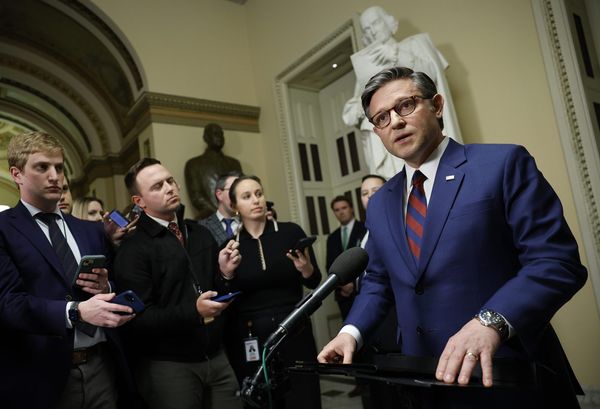
You never really know how your favorite song was recorded. Maybe you’ve envisioned Jay-Z in a vocal booth rapping the verses of “99 Problems,” or The Beach Boys crowded around a microphone crooning “God Only Knows.”
Laura Sisk doesn’t have to imagine. Day in and day out, she’s in the studio alongside super-producer Jack Antonoff recording their friends — who just happen to be the biggest pop stars in the world. In the last year alone, she engineered milestone records for Taylor Swift, Lorde, St. Vincent, P!nk, Sia, ZAYN and Bleachers. Did I mention she won a Grammy for her work on Swift’s 1989?
Considering these accolades, Laura couldn’t have been more unassuming and fun to be around. I was excited to learn more about her story and the artists she loves over coffee in the East Village. Here’s our chat:
Danny Ross: Congrats on a career-defining year. How do you have time to make all these records?
Laura Sisk: It’s just hectic and exciting, and I wouldn’t want it any other way. Being able to work with such different artists has been really cool, especially this year. St Vincent, Lorde, Taylor, P!nk — they’re all totally different people with a different sense of artistry. They’re masters of their craft, which is so cool to witness while it’s happening live.
Ross: You were Grammy-nominated for working on Lorde’s excellent Melodrama. What’s your process recording her vocal?
Sisk: Her voice is hauntingly beautiful. She puts so much emotion into every single word, and she really cares how her delivery matches the lyrical content. We’re focused on keeping the integrity of her voice front and center because she tells amazing stories.
Actually, I had this emotional moment while editing the end of “Liability Reprise.” She says “But you’re not what you thought you were” over and over again. It builds and builds and builds. And by the time I was done editing, I had an existential crisis. I didn’t know who I was!
Ross: You also worked on another giant album, Taylor Swift’s Reputation. What went behind “Look What You Made Me Do”?
Sisk: It was exciting because it felt like a sonic departure. We recorded live strings and horns for that bridge section — our mutual friend Evan Smith played on it. I think everyone can agree that Reputation was a bold sonic move for her and I was excited to be a part of it.
Ross: What’s the process of recording Taylor’s vocal?
Sisk: It’s really cool to watch Taylor and Jack’s process because they’ll have a conversation, go into the studio, and then the song will be an embodiment of that conversation. Jack usually records Taylor’s vocal alone. The main thing with Taylor’s vocal is to let it shine. It’s so beautiful and she does incredible harmonies and ad libs. And then I get to dive into all the lyrics as a fan. I mean, that’s the best part!
Ross: My favorite song from that album is “Getaway Car.”
Sisk: Don’t get me started, it’s so good! I called Jack while I was editing the track, and was like, “This is about a rebound relationship, right?” Every single line is so smart and interesting. There’s such a natural key change, and the distorted horns sound like synths.
Ross: Where do you guys record?
Sisk: We go back and forth between L.A. and New York. I was in New York almost six months last year, so I’ve racked up a ton of points at the Sheraton!
Ross: What’s your process in the studio with Jack?
Sisk: Frequently it’s just me, Jack, and an artist in a room. I’ll be editing a part while Jack is maybe chopping up vocals to make cool samples. He’ll keep going creatively while I take the technical work.
Jack is great at recording. Whenever we work, every single instrument and microphone is already hooked up and sounding great before the artist arrives. That way, we can just hit a button whenever there’s an idea. The second you have to slow someone down in their creative process, it ruins the vibe of a session.
We usually have two rooms set up, and I pop in and out depending on what’s going on and how comfortable the artist is with me. If they’re working on a really personal song, I’ll go in a different room. But when we’re building the track, I’ll definitely be there recording while Jack plays a lot of the instruments.
Ross: How do you get those amazing drum sounds?
Sisk: Jack often works on an AKAI MPC drum machine. It has all these sounds at his fingertips, so he can switch up the vibe really quickly or change the tempo. Sometimes we’ll start with a beat, or sometimes we’ll start with lyrics — whatever idea comes first.
Ross: And how do you guys go about blending the organic and the electronic so effortlessly?
Sisk: For example, after most of the tracks were done on the last Bleachers record Gone Now, we recorded the band live on every single song, and then pulled chunks of those textures into the electronic recordings. That yielded crazy drum fills and beautiful piano solos, giving the album more of a live feeling. Plus, Jack is playing analog synths and changing the filters live as a performance — we’re not tweaking after the fact.
Ross: When you start a track, are there working demos?
Sisk: We’re never working on a demo because there’s no point when you’re in an incredible studio. Plus, you get really special vocal takes right off the bat because artists are still feeling the emotion from writing lyrics. Honestly, a lot of the stuff that we record on the first day gets used in the final mix. We try to get the mix as close as possible, and then from there send it off to a mixing engineer who has totally fresh ears.
Ross: Is there a secret to a really great bass tone in the mix?
Sisk: I think the key is to know your speakers, and listen on as many systems as you can. Because what might sound like low end in one place doesn’t sound like low end in others. I’ll listen in my car or in crappy earbuds. Remember, 90% of the people listening to your song will stream an MP3 on their cheap laptop speakers.
Ross: Not everyone starts out thinking they’ll be an engineer. Did you always know that you were interested in the technical side of music?
Sisk: I’m from Marin County, which is north of San Francisco. I started playing piano when I was a tiny tot and I was obsessed with The Beatles. I’d watch A Hard Day’s Night with my dad a million times, taking in the insanity and people screaming.
Ross: Fun fact: One of those little kids screaming was Phil Collins.
Sisk: Amazing! All my friends were into older music, it’s everywhere in San Francisco. I played oboe in high school, and that tone could be very horrible when you’re learning (laughs). But one day my band teacher Mr. Peabody got really sick and we needed to record our tapes. So I said, “I can figure this out!” I had no idea what I was doing but ended up really liking it.
I applied to recording programs and ended up at Indiana University. When I got to college, I got a lot more excited about experimental music. I fell in love with the Flaming Lips — listening to Yoshimi Battles The Pink Robots in surround sound was the greatest thing I’d ever heard in my entire life.
Ross: I also love that album. So how did you start to get work?
Sisk: After school, I worked with a producer named John Hill. I started as an assistant, and became his full-time engineer pretty quickly. Phantogram’s Voices is one of my favorite records that we worked on together. Also Portugal. The Man’s Evil Friends. But the sound that we were going for on the Wavves album Afraid of Heights wasn’t the kind of music that I was listening to at the time. So I had to really dig in and figure out how to engineer it, which was exciting. Most artists are trying to make something that has influences that can be referenced, but with a different take on it. Every record I’ve worked on ends up being experimental in some way. (Continued on Page 2)
Ross: So how did Jack come into the picture?
Sisk: John Hill co-produced the first Bleachers record Strange Desire, which is how I met Jack. Eventually when I went freelance, Jack needed an engineer for Taylor Swift’s 1989 record. Those were the first songs we worked on — “Out Of The Woods,” “I Wish You Would,” and “You Are In Love.”
Ross: You mentioned producers, but what is a music producer exactly?
Sisk: The term “producer” has a wide range. There are incredible producers like Rick Rubin who will listen and give advice, reshaping songs and melodies. But there are also producers like Metro Boomin who make incredible beats. Some are more musician-based, while others are super technical and will spend forever getting a guitar tone they want.
Ross: So are you a producer in addition to being an engineer?
Sisk: I do a lot of vocal production. Usually that means recording an artist, getting good takes out of them, and helping to figure out their tone and harmonies. Then I edit and tune it. I’m making creative choices as a producer when I’m comping, and suggesting how the artist sings in a session.
Ross: How do you make a singer feel comfortable?
Sisk: Everyone in music ends up developing their own language, which is one of the interesting things about working with multiple artists. You have to start understanding their language — “Is this what they mean by ‘sharp’? Is this what they mean by ‘tight’?”
Ross: I’ve heard musicians ask to hear colors like purple.
Sisk: Ella [Lorde] definitely sees a lot of color. Everyone is totally different. But one thing that Jack does, which I love, is that we always set up our vocals in the control room. It’s a much more personal way to record because you’re not speaking to a singer through glass. It feels more comfortable for the artist to just be sitting next to you!
Ross: Do you edit on headphones?
Sisk: Yes, I love the closeness and the mobility. It feels like it’s inside your brain rather than in front of you. And speakers are tuned so differently, it’s easy to miss bad edits.
Ross: Do you talk to singers about vocal effects?
Sisk: Some artists like to sing with a reverb, and others like it dry so they can really hear what they’re doing. Getting the tone is very personal when you’re recording vocals because listeners are connecting with the vocal immediately. So we’ll try things like singing off-mic, sitting down, or standing up.
Ross: Speaking of effects, St. Vincent knows how to make guitars not sound like guitars.
Sisk: And she’s really good at it! It’s hard for me to know exactly what she’s doing honestly. A lot of it is just the way she’s playing with pitch bends and hard stops. But we spent a lot of time getting really cool guitar tones up. It’s so exciting to hear a sound and be like, “What is that? Is that a synth? Or is that a vocal that’s super distorted?”
Ross: Tune-yards is another artist you worked with using otherworldly sounds.
Sisk: Meryl’s an incredible drummer, and she was playing all those crazy sounds live using Ableton. I couldn’t understand the poly-rhythms they were doing, it was unbelievable. They left a session one day to go to tabla class. They’re on a crazy journey, just trying to get every possible influence under their belt. Meryl’s such a cool singer, with a specific tone and unique voice.
Ross: There aren’t too many female engineers. Do you think that women are making gains in the music business?
Sisk: The ratio of men to women in the music industry is definitely skewed — less so for artists than the technical jobs. And I think that’s a pretty widespread issue in most technical fields. I find it weird because I know just as many women as men who love music. But people are starting to see that there’s a whole network of people behind artists. There are so many ways to participate in the creative process. You don’t have to be the singer!
I think women are definitely starting to get more STEM education, and hopefully that will start translating to music business jobs. I think it already has. There’s more young women coming up than older women to look up to. And there are places like Women’s Audio Mission trying to get more young women making records.
Ross: The #MeToo movement has largely spared the music industry, with the exception recently of R. Kelly. Do you think that will change?
Sisk: I’ve been really fortunate to work with incredible people who would never do or think anything sleazy. There are obviously a lot of stories in the media, but I’ve been able to focus entirely on the work.
Sexism definitely exists though. People in a session sometimes assume I’m not the engineer, even when I’m in the middle of working. That’s weird. One good thing to come from the movement is that people have started paying attention to their own actions, and that’s wonderful.
Ross: Lastly, what advice would you give to up-and-coming engineers and musicians?
Sisk: My biggest piece of advice to anyone starting out is don’t be afraid of your mistakes. I’ve made so many mistakes! Like one time — a very long time ago — I recorded with the clock synched at the wrong sample rate. But I fixed it! Almost no mistake is permanent unless you’ve smashed a hard drive with a hammer. If I had just hit the button, and it had worked, I wouldn’t know what I know.







